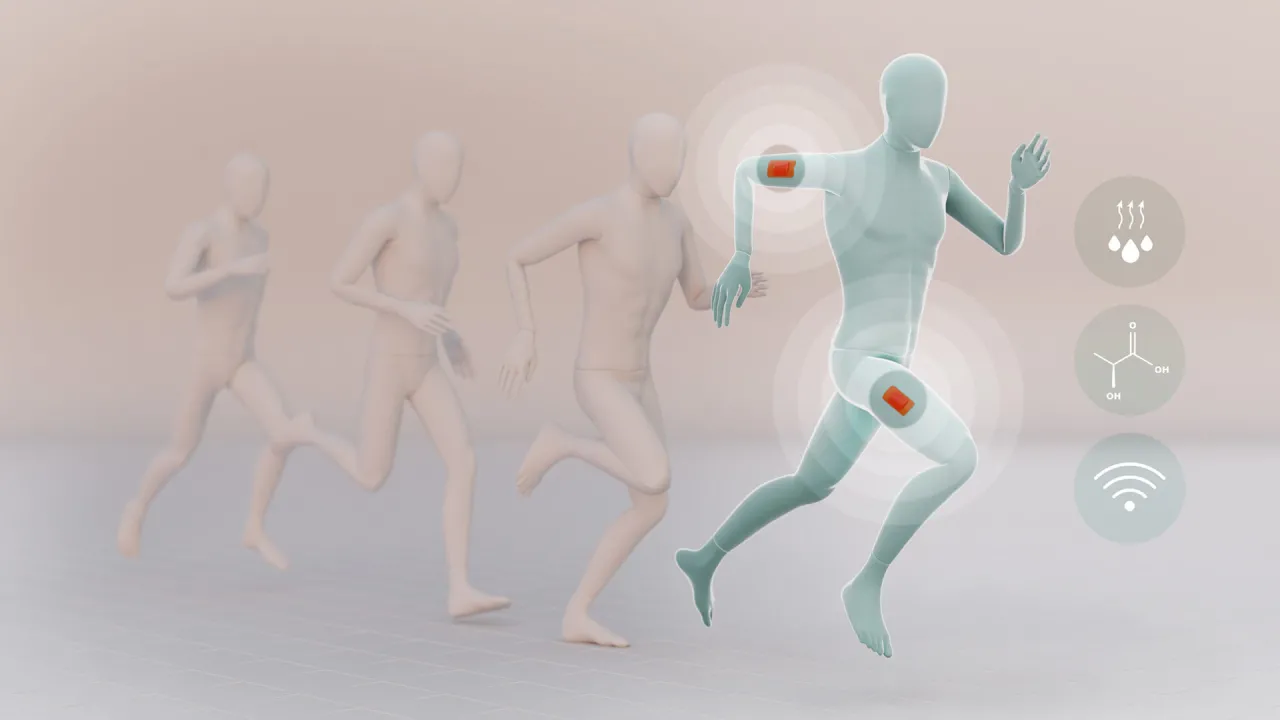
Sweat-sniffing sensor could make workouts smarter
No blood, no batteries — just sweat, microwaves and some seriously cool science.
About
If you have ever pushed yourself to the edge in a workout — legs on fire, lungs burning — you have probably crossed what physiologists call a lactate threshold. It is the point where muscles cannot clear a metabolic by-product called lactate fast enough, and performance starts to nosedive.
Athletes train for years to raise that threshold. But knowing exactly when it is crossed still requires lab gear, blood samples and a big interruption to your workout.
A research team at KAUST aims to change that. Atif Shamim and members of his group built a noninvasive sweat sensor that can detect lactate levels in real time using nothing more than microwaves and enzyme-coated glass beads[1]
No blood. No needles. No power source. Just stick on a cheap, disposable patch, sweat it out and let the physics do the rest.
Here’s how it works: the sensor uses a circuit design technology called a complementary split-ring resonator — essentially a microwave component that is finely tuned to detect subtle chemical shifts. With sweat, lactate molecules react with enzymes inside the sensor, producing hydrogen peroxide. That tiny chemical change shifts the way the sensor reflects microwave signals, creating a digital fingerprint of how hard the body is working during physical activity.
Read the full story here.


